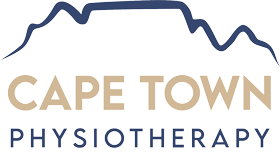Lower Back Pain
Lower back pain will affect at least 80% of us at some point in our lives. Lower back pain is very common and very treatable, and is by far the most common condition we treat.
Research shows that early intervention for back pain improves results and prevents chronic back problems. This is our experience too. We give you clear answers and effective treatment so you can avoid chronic back pain and back surgery.
What causes lower back pain:
Our first goal is to figure out what structure is causing your back pain: muscle, joint or nerve.
We do this by getting a clear history of your pain, its nature and the effects on your life. We then use specialised physical assessment techniques which refine our diagnosis of the problem. Once we know what is causing your pain whether it be a disc bulge, a facet joint impingement or simply muscle spasm, it is much easier to apply an effective treatment which really targets your problem area.
Our goal is to fix you as quickly as possible and then to give you tools to prevent the problem coming back.
Common causes of lower back pain:
- Disc prolapse or disc bulge
- Degenerative disc disease
- Muscle spasm
- Facet joint narrowing & facet impingement
- Pinched nerves
- Sciatica
- Piriformis syndrome
- Sacroiliac joint stiffness and pain
- Posture, mal-alignment and repetitive strain
- Scoliosis, Ankylosing Spondylitis, Scheurmanns disease, Spondylolisthesis
- Nerve symptoms – numbness, pins & needles, sciatica
Lower back pain treatment
We have a range of options to treat lower back pain. Your diagnosis will determine what method will be most effective from the list below:
Hands-on treatment
- Deep tissue massage for muscles that are tight or in spasm
- Trigger point release for knots
- Myofascial release
Mobilisation of stiff or locked joints, we are trained in:
- Mulligan
- Mckenzie Technique
- Maitland Method
Correcting muscle imbalances:
- Stretches and strengthening exercises
- Exercises for lower back pain
- Core stability exercises: personalised Pilates exercises for back pain
- Ergonomic assessment: guidance on your chair, desk and computer set up
- Pause exercises to reduce repetitive strain at work
- Correcting incorrect movement patterns and improving motor control
Dry needling.
Sport specific treatment and input.
Let us show you the best way to treat your lower back pain.


